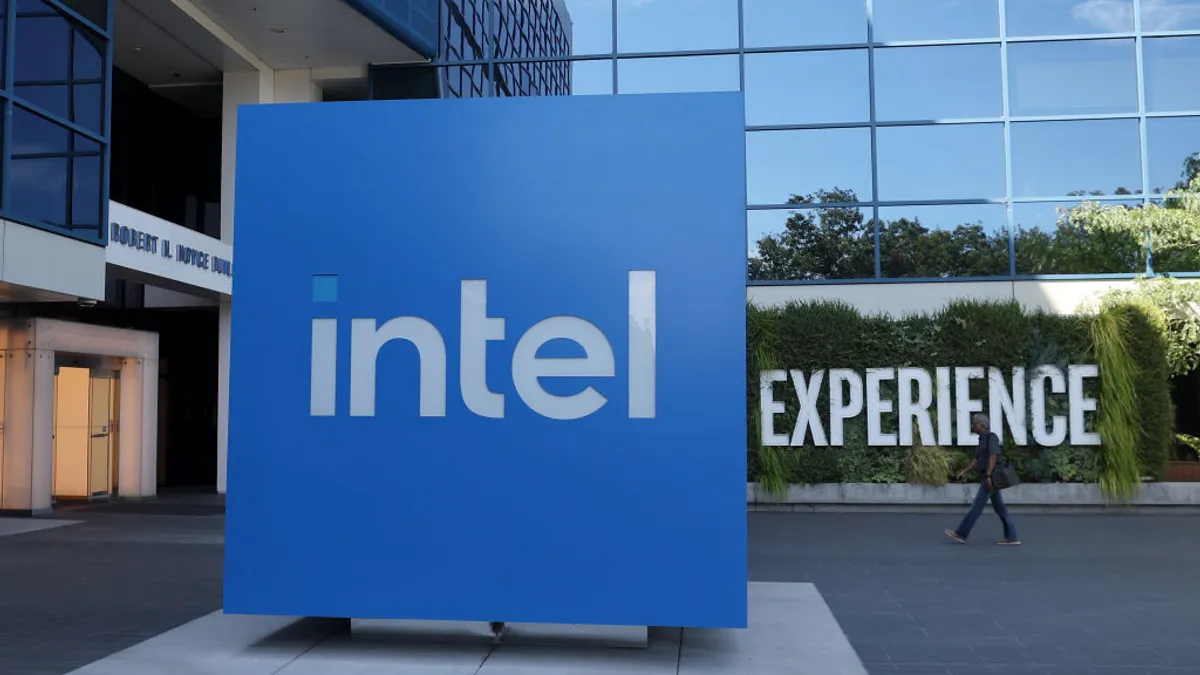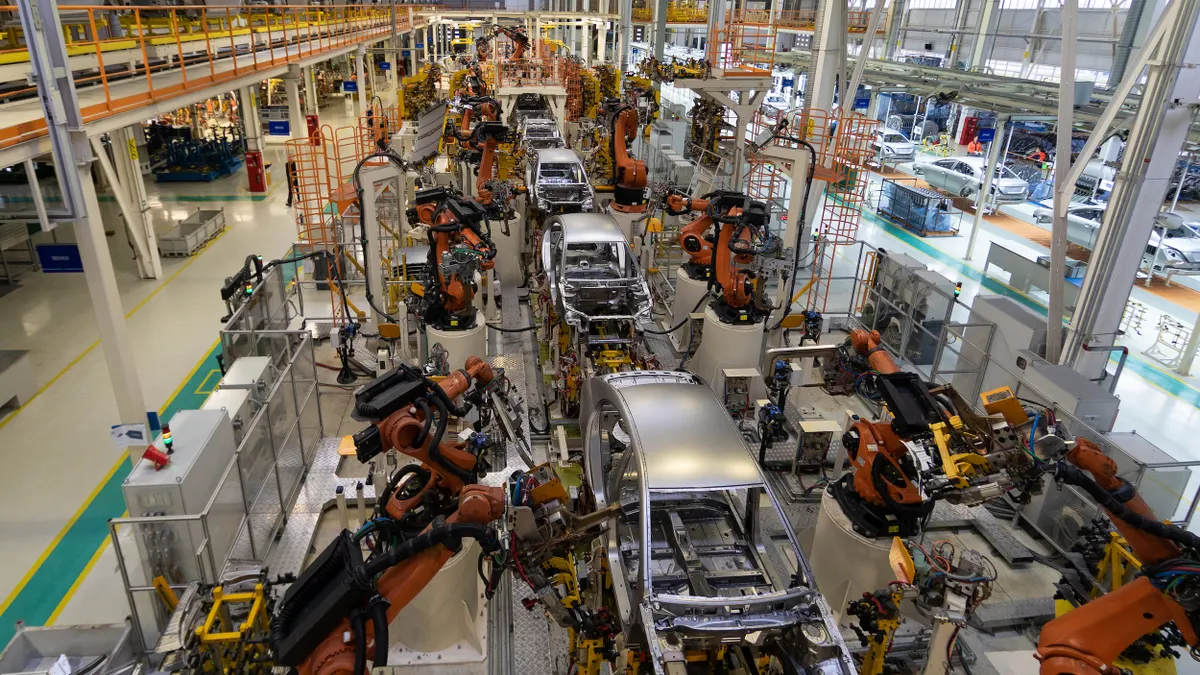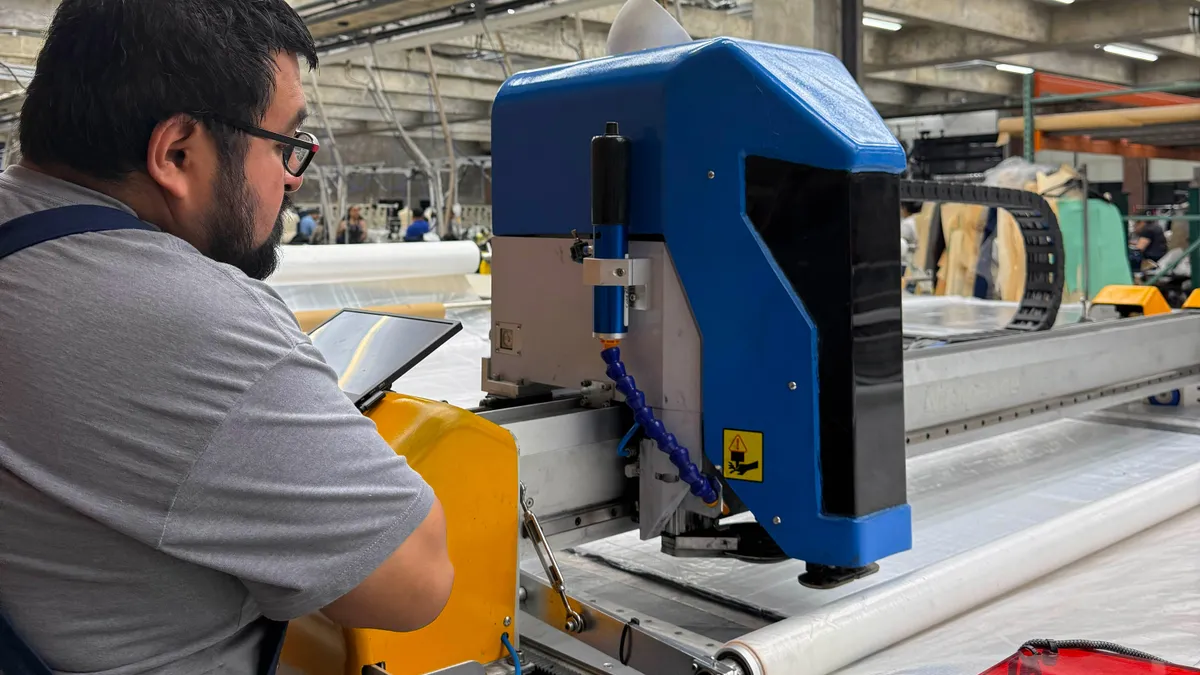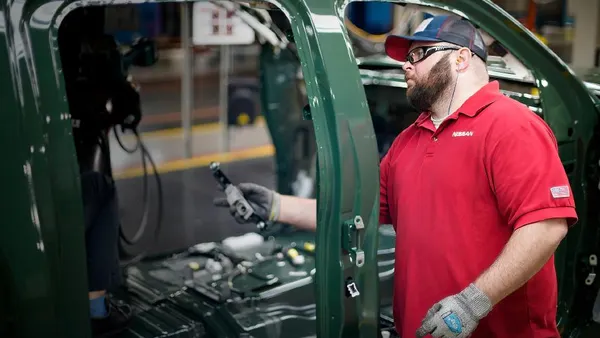Dive Brief:
- Intel plans to continue gauging customer demand for its next-generation 14A chipmaking process before building out manufacturing capacity, CFO David Zinsner said at Citi’s 2025 Global Technology, Media and Telecommunications Conference on Sept. 4.
- Intel could contract 14A production to Taiwan Semiconductor Manufacturing Co. or other chipmakers, but there’s “a relatively low likelihood that it goes that way,” Zinsner said.
- Zinsner also touted the U.S. government’s recent equity stake for removing the “handcuffs” associated with the previously awarded CHIPS and Science Act grants, giving Intel more operational flexibility.
Dive Insight:
The decision underscores a strategic shift happening under the leadership of CEO Lip-Bu Tan to make Intel more “lean, fast and agile.” As a result, the company laid off thousands of workers over the summer with the goal of reducing its core headcount to 75,000 by the end of the year. Intel is also taking a more conservative business approach and refusing to take on more than it can handle.
“Our intention is to continue to engage with customers and be ready to build capacity when customer demand materializes,” Zinsner said at the conference. “But what we wanted to do was make sure investors understood that, hey, it's not like we're going to do this without any real financial discipline.”
Under Intel’s previous CEO Pat Gelsinger, Intel spent heavily on expanding its manufacturing capacity in an effort to turn the company around financially and compete with the likes of TSMC and Samsung as a third-party chip foundry. However, the strategy ultimately failed. Intel overestimated its customer demand and its foundry business recorded billions of dollars in losses from 2022-2024.
In July, Intel disclosed that it may pause or discontinue development of its 14A nodes if it cannot find a “significant external foundry customer,” which could make it more dependent on third-party foundries.
“What we are trying to articulate is we will build the capacity when we know we’ve got the demand for that capacity, and we will not do it before that,” Zinsner said about Intel’s next-generation 14A node. Nodes are essentially rulebooks for designing and building components on a chip.
Currently, Intel is ramping its 18A process into production with the goal of scaling to high-volume manufacturing by the end of the year. Zinsner said the company will know by 2026 about the status of its “more expensive” 14A node based on customer demand and investment costs.
As part of the recent changes at Intel, the company on Sept. 8 announced a series of leadership appointments, including: Kevork Kechichian as EVP and general manager of the data center group; Jim Johnson as SVP and general manager of the client computing group; Srini Iyengar as SVP and fellow of a newly formed central engineering group and Naga Chandrasekaran as EVP and CTO of Intel’s foundry business.
Additionally, Michelle Johnston Holthaus, chief executive of Intel Products, is stepping down after more than three decades with the company. She has previously been an interim co-CEO, EVP and general manager of the client computing group and chief revenue officer.
In recent weeks, Intel has turned heads after inking multi-billion-dollar deals with Softbank and the U.S. government in exchange for ownership stakes in the company. The government bought 10% equity using unpaid money that was previously awarded to Intel under the U.S. CHIPS and Science Act. It will have passive ownership of Intel with no board representation, but will be able to vote on certain shareholder matters, according to the deal.
Zinsner said the government’s equity stake allows Intel to receive the money upfront, removes a lot of “handcuffs associated with the grants” and gives the company more flexibility.
“It doesn’t mean we’re not going to do the things that the U.S. wants us to do in terms of building a stronger U.S. manufacturing presence,” Zinsner said. “But it does mean we have all the operational flexibility we should have at the company to run the business effectively for the best returns to our shareholders.”
Meanwhile, lawmakers have raised concerns about the government’s stake and what it could mean for future investments under the Trump administration. Sen. Rand Paul, R-Ky., called the deal a “terrible idea” on social media platform X, describing the government’s stake as a “step toward socialism.”
More recently, Sen. Elizabeth Warren, D-Mass., raised questions about what Americans stand to gain from such a deal. The CHIPS and Science Act had clear requirements to build factories, work closely with labor unions and limit stock buybacks in exchange for the grants, Warren wrote in a letter dated Sept. 3 to Commerce Secretary Howard Lutnick.
“What is the American public getting from this deal? An extremely risky investment,” Warren said in her letter. She and Sen. Bernie Sanders, I-Vt. previously supported the idea of Congress receiving equity under the Biden administration.
At the conference, Zinsner touted the equity stake as a great deal for shareholders and U.S. taxpayers, calling it a “win-win for everybody.”














